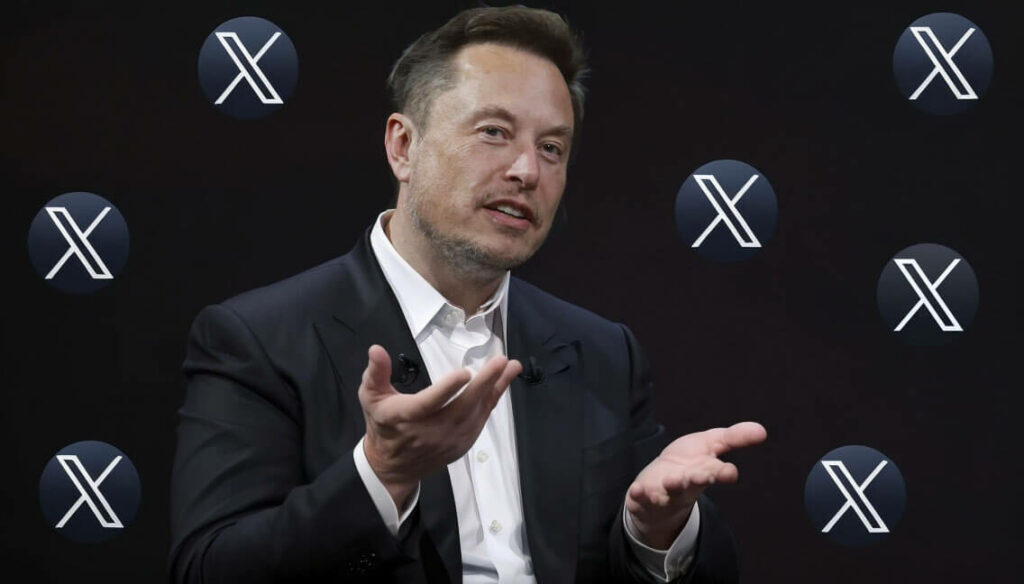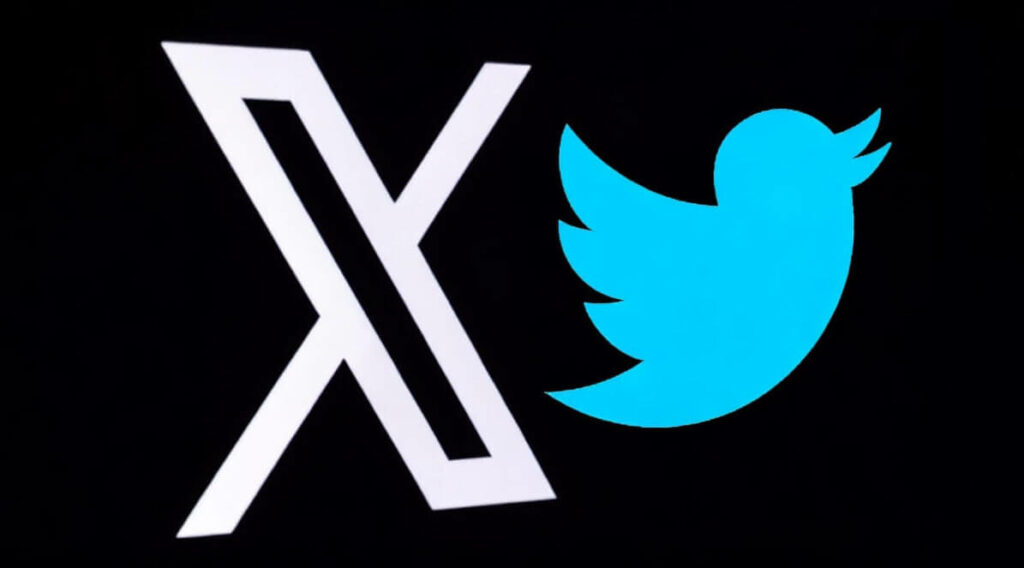Why does Twitter have an X? When did Twitter change to X on the App Store and Google Play? These are some of the burning questions curious netizens are seeking answers to. As you read on, you’ll find those answers in this article.
That said, it’s worth noting that Twitter’s iconic Bird existed from 2010 until new owner Elon Musk ditched it in July 2023. The Bird remained one of the most recognizable symbols on social media for over a decade. However, companies would usually undergo significant shakeups when ownership changes hands. That’s the story of Twitter, now X. In this blog post, we’ll discuss how people have reacted to this change, the reasons behind the switch, and the new name for tweets. Let’s go!
Table of Contents
Why Is Twitter Called X Now?

Elon Musk is known for making bold moves. He’s not shied away from making his mark since acquiring Twitter Inc in 2022. The world’s richest man (according to Forbes) has always been a big fan of the letter X. Back in 1999, he founded a payment platform called X.com. Even after it merged with Peter Thiel’s company and rebranded as PayPal, reports say Musk pushed for the name to remain as X.com. Given Musk’s ambitions and his track record, this letter should feature prominently in his personal and professional life.
We all know Musk’s space technology company SpaceX. It has the X element in it, too. Musk’s son, whom he shares with Canadian singer Grimes, is named X Æ A-12. Musk’s repeated use of the letter might suggest a fondness for mystery, the uncharted, or perhaps innovation – all characteristics evident in his diverse range of ventures, from sustainable energy to interplanetary travel.
When Twitter was renamed “X,” the decision was not entirely out of character for Musk. In fact, many of its 368 million monthly active users were not so surprised. While retaining the previous could still make sense, X signals a new chapter, a deviation from the norm, and a commitment to pioneering. In the end, whether one agrees with his decisions or not, Elon Musk’s affinity for the letter “X” reveals much about his personality and vision for the future.
Why Has It Changed?

According to Musk, the renaming and restructuring of Twitter reflect a move beyond the simple exchange of short messages or “tweets.” If you recall, this was one key feature of Twitter’s origins. The tech mogul also based the acquisition and changes on the need for a platform that offers unlimited interactivity and freedom of speech. It is clear that Musk has always wanted an “everything app.” The new name, X, beacons a broader vision where users can enjoy not just communication capabilities but extensive financial management. Some internet sections have linked to the Chinese-owned WeChat, which features many of the capabilities Musk wishes to have on X.
Since the takeover, users could participate in real-time audio chats, compose and send longer text messages, and stream hours of video on Twitter. We saw this in full effect in the recent series that ex-Fox News anchor Tucker Carlson debuted on X. In this evolving context, Musk believes that the name Twitter and its blue bird logo no longer make sense, marking the end of an era and the beginning of a more expansive and integrated platform.
What Do We Call Tweets Now?
Here’s another interesting question that needs to be answered, “What do we call tweets now, anyway? Do we say “Xeets”?” Well, since the update, the iconic blue button that said “tweet” now says “post.” As a result, it is safe to say that tweets are now posts on the X app. This is particularly something die-hard Twitter fans find hard to digest.
The term “tweet” wasn’t just a label but an integral part of the internet’s lexicon. It became a cultural shorthand for expressing thoughts, breaking news, and real-time reactions in bite-sized content. Many platform loyalists find this change a bittersweet departure from the brand’s legacy.
However, as with all transitions, users are expected to adapt over time. Some believe that as the social media company evolves, the term “post” will eventually establish its own unique significance and relevance, just as “tweet” did in the past. Others claim “tweet” was exclusive to Twitter, unlike “post,” a generic term on the internet.
So, as users navigate the new interface and features of the X app, they’ll be making “posts,” leaving the era of “tweets” as a cherished memory of Twitter’s storied past.
How People Reacted to the Change?
Massive changes accompanied Twitter’s transition to X. Such moves are bound to elicit various reactions from the user base, and indeed, they did. In case you are one of those asking what is Twitter X, here are some of the changes to keep in mind:
- X implements a 10% fee on content-based subscriptions.
- Content creators are permitted to monetize from users.
- Enhanced security measures for Blue members.
- Twitter’s new direction is An All-in-One Application.
- A premium subscription is needed for the verification badge.
- Rebranding Twitter to X.
- A large-scale organizational reorganization resulted in many job losses.
- There is a prohibition on having profiles linked to rival social platforms.
- It is a transition to a completely open-source model.
- The platform will address and rectify the issues of shadow restrictions.
For starters, the 10% fee on content-based subscriptions raised many eyebrows. There are concerns about X taking a significant cut from creators who were only just allowed the ability to monetize from users. Though beneficial for some, this change also drew criticism from others who viewed it as a potential hindrance to creators with smaller user engagement, creating a divide in the community.
Proposing enhanced security measures was met with more universal approval, particularly for Blue members. In a digital age where security is paramount, users expressed relief and support for the bolstered two-factor authentication.
However, the platform’s new direction as an all-encompassing application stirred mixed feelings. For some, it symbolized progress and adaptability; for others, it marked a deviation from the simplicity and focus that they loved about Twitter.
Here is one straw that broke the camel’s back for many users: A paid subscription for the coveted blue tick. Some welcomed it as they saw the chance to get verified quicker, while others saw it as a financial barrier to acknowledgment and visibility.
The rebrand to X was perhaps the most conspicuous change, signaling a new era and identity for the platform. The move, while bold, led to nostalgia for the iconic bird and the established brand name, Twitter.
The merger with X Corporation and the subsequent major organizational restructuring, including thousands of layoffs, brought forward concerns regarding employee welfare and the future working culture of the organization. Also, it has raised questions about the influence of parent companies in such transformative decisions.
Furthermore, the decision to prohibit profiles linked to rival social platforms raised questions about freedom of expression and cross-platform integration, potentially isolating users and limiting their online presence.
In an unexpected turn, transitioning to a completely open-source model offered a refreshing openness, potentially encouraging innovation and collaboration. Yet, it also prompted questions about security, control, and the platform’s direction.
Lastly, the effort to address and rectify issues of shadow restrictions was a welcomed change, reflecting a commitment to fairness and transparency, essential for retaining user trust and satisfaction in the long run.
As we mourn the death of the Bird, the global community continues to adapt, discuss, and observe, waiting to see how X will shape the future landscape of social media and online interaction.
Conclusion
There it is, folks, the answer to the question, “Why is my Twitter an X?” What we are witnessing is the transformation of Twitter under Elon Musk’s leadership. With a rich history of innovation and bold moves, this shift heralds a new era for social media. While it brings new possibilities, it also challenges users to adapt and evolve. As with all innovations, only time will tell if this transition benefits the platform’s legacy and millions of users worldwide. Until then, the digital world watches with bated breath.
- A Step-by-Step Guide to Deleting Fake X Followers - Janeiro 3, 2025
- Tips to Boost Your Visibility on X - Janeiro 3, 2025
- How to Use X Polls to Boost Audience Interaction - Dezembro 2, 2024

